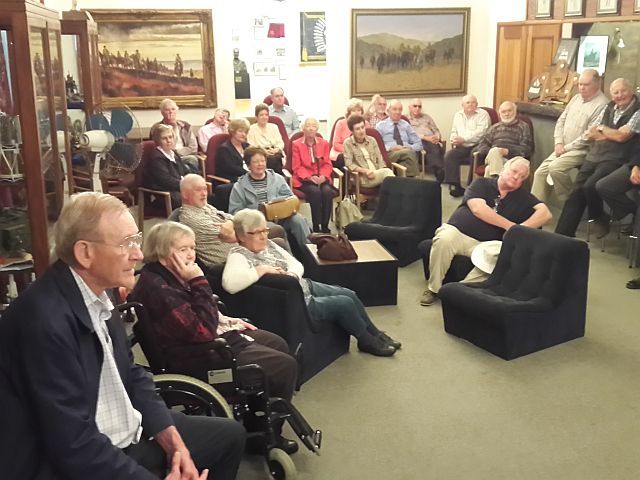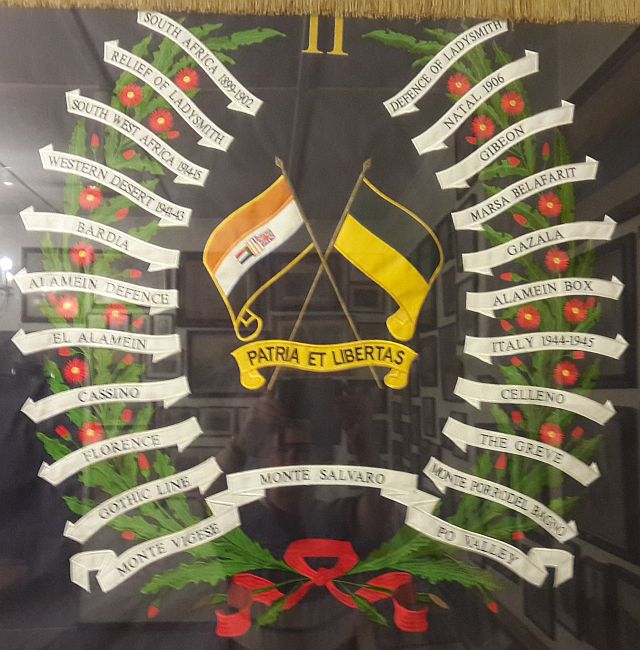

 The South African
The South African

Members listen attentively
The ILH was born in Johannesburg in 1899 after discussions between its founders, Colonel Aubrey WoollsSampson, Major Walter 'Karri' Davies, Sir Percy Fitzpatrick and Captain Charles Mullins. Command was given to Colonel J J Scott-Chisholme of the 5th Royal Irish Lancers who led 444 officers and men, chosen from 5 000 volunteers, to their first engagement at Elandslaagte on 21 October 1899. Capt C H Mullins and Lt R Johnstone were each awarded the Victoria Cross after this engagement. The ILH was present at the Siege of Ladysmith (Battle of Wagon Hill), the battles of Spionkop and Colenso and the Relief of Ladysmith. It was chosen to be part of the Mafeking Relief Column. By late 1900 a second battalion was raised, which fought until the end of the war.
During the First World War, both battalions of the ILH saw action in German South West Africa and later in Palestine, Egypt and France. With the outbreak of the Second World War, the Regiment was reconstituted as an infantry battalion, and had a second battalion added. The battalions were separated and fought in different arenas. Whilst several amalgamations resulted in the second battalion becoming the 4th/6th Armoured Regiment, the 1 st Battalion formed part of the 3rd Brigade of the South African 1 st Infantry Division and fought in the North Africa campaign in the first and second battles of EI Alamein.
Upon their return to South Africa, the two battalions were reorganized and amalgamated with the Kimberley Regiment to form the Imperial Light Horse/Kimberley Regiment (IU-j/KimR). In September 1943, this regiment sailed for North Africa, and finally disembarked in Taranto to join the British 8th Army and later the American 5th Army in the Italian Campaign ..
The ILH reformed in 1949 as an armoured regiment in the Citizen Force. When South Africa left the Commonwealth, the regiment was retitled the Light Horse Regiment. It was resuscitated as an armoured regiment and equipped with Sherman tanks. The fiftieth anniversary celebrations in 1949 included a review of the regiment by the Minister of Defence, Hon F C Erasmus, and the unveiling of a memorial plaque by Field Marshal the Rt Hon J C Smuts at St Mary's Cathedral, honouring the men who lost Jheir lives in the Second World War. The Diamond Jubilee, ten years later, was noteworthy for the conferment of the Freedom of the City of Johannesburg as well as of Mafeking and Ladysmith. The grand finale to these celebrations was the unveiling of the Regimental War Memorial, a Crusader tank mounted on a plinth, outside the Association Hall. This Memorial has now been transferred to the Regimental Headquarters at Kelvin in Sandton.
By 1975, the regiment reached a strength of 2 000, and was split in two once again, namely the 1 st Light Horse Regiment and the 2nd Light Horse Regiment. Both regiments saw action in the South African Border War, in northern South West Africa (Namibia) and Angola. Since 1994, the two regiments have been re-incorporated into the Light Horse' Regiment and designated an armoured reconnaissance regiment. In total, 31 battle honours have been awarded to 1 LHR and 2LHR, 23 of which are displayed on the Regimental Colours at the regimental museum. The National Colour was presented to 1 LHR and 2LHR in 1993.

National Colour with Battle Honours
The Light Horse Regimental Museum was created during the hundredth anniversary in 1999. The displays are well designed and include the Regimental Colours, the King's Colour, and the National Colour, flags, uniforms, and countless memorabilia. There are many music instruments from the glory days of the Regimental Band of the Light Horse Regiment. As a spiritual home to the serving members, and to preserve the legacy of those who lost their lives in numerous conflicts over the years, there is a wonderfully laid out Memorial Garden and Wall of Remembrance.
The informative morning was concluded with a wonderful meal in the hall next to the museum, and we all went home with much to think about.
Return to Journal Index OR Society's Home page
South African Military History Society / scribe@samilitaryhistory.org